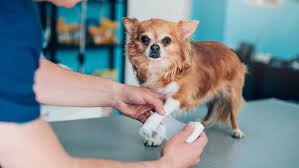The COVID-19 pandemic has brought sweeping changes to various sectors, and the pet insurance industry is no exception. As the world faced unprecedented challenges, pet owners’ behaviors and attitudes towards their furry companions evolved significantly. This article delves into how the pandemic has transformed the pet insurance landscape, focusing on key shifts and emerging trends that are reshaping the industry.
Increased Demand for Pet Insurance
The COVID-19 pandemic has significantly increased the demand for pet insurance. With more people working from home and spending additional time with their pets, there was a noticeable shift in how people perceive pet care and financial preparedness for unexpected veterinary expenses. The surge in pet adoption during lockdowns also contributed to this heightened awareness. Pet owners became more conscious of the potential costs associated with pet health, prompting a rise in inquiries and purchases of pet insurance policies.
Rise in Pet Ownership and Spending
The pandemic saw a notable increase in pet ownership as individuals sought companionship and comfort during isolation. This surge in new pet owners has had a direct impact on the pet insurance market. Many of these new pet owners, who previously may not have considered insurance, are now prioritizing it to manage potential health expenses. Additionally, existing pet owners have been reallocating more resources towards their pets’ well-being, driven by the increased time spent with them and a greater appreciation for their health needs. This trend has led to a significant boost in the demand for pet insurance.
Expansion of Coverage Options
In response to the evolving needs of pet owners during the pandemic, pet insurance providers have expanded their coverage options. The increased awareness of pet health and the desire for comprehensive care have led insurers to offer more flexible policies. For instance, there has been a notable rise in policies that cover telemedicine consultations, reflecting the growing importance of remote care options. Insurers are now providing broader coverage that includes not just emergency care but also routine and preventive services, catering to the heightened focus on overall pet health.
Adoption of Digital Tools and Services
The pandemic accelerated the adoption of digital tools and services within the pet insurance industry. With in-person interactions restricted, both insurers and pet owners turned to digital platforms for managing insurance policies and accessing veterinary care. Online claim submissions, virtual consultations, and mobile apps have become integral to the pet insurance experience. These digital solutions offer convenience and accessibility, allowing pet owners to efficiently manage their policies and interact with insurance providers from the safety of their homes. The shift towards digitalization has streamlined processes and enhanced the overall customer experience.
Focus on Preventive Care
COVID-19 highlighted the importance of preventive care for pets, mirroring broader healthcare trends. Pet insurance providers have responded by incorporating preventive care coverage into their policies. This shift reflects an increased awareness among pet owners about the benefits of proactive health management. By offering coverage for routine check-ups, vaccinations, and other preventive measures, insurers are helping pet owners reduce long-term costs and ensure their pets’ well-being. The emphasis on preventive care is a direct response to the pandemic’s impact on health consciousness and the desire for comprehensive pet care solutions.

Shifting Attitudes Towards Pet Insurance
The pandemic has also led to a shift in attitudes towards pet insurance. Previously seen as an optional expense, pet insurance is now viewed by many as a crucial component of responsible pet ownership. The increased financial strain on households during the pandemic has underscored the need for financial protection against unexpected veterinary costs. As a result, pet owners are more likely to view insurance as a necessary investment in their pets’ health and well-being, leading to a broader acceptance and adoption of pet insurance policies.
Emerging Trends and Future Outlook
Looking ahead, the changes brought about by the COVID-19 pandemic are likely to continue influencing the pet insurance industry. The increased focus on digital tools and preventive care is expected to persist, with insurers continuing to innovate and adapt to evolving customer needs. The rise in pet ownership and the growing demand for comprehensive coverage will likely drive further expansion of insurance offerings. As the industry navigates these changes, pet insurance providers will need to remain agile and responsive to ensure they meet the expectations of a changing market.
Conclusion
In summary, COVID-19 has significantly impacted the pet insurance industry, leading to increased demand, expanded coverage options, and greater adoption of digital tools. The rise in pet ownership and the focus on preventive care have reshaped how pet owners approach insurance for their furry companions. As the world continues to adapt to the post-pandemic era, these shifts will likely have lasting effects on the industry, shaping the future of pet insurance in ways that prioritize comprehensive care and digital convenience.
To read more articles like this click here.
To read more about such topics click here.
